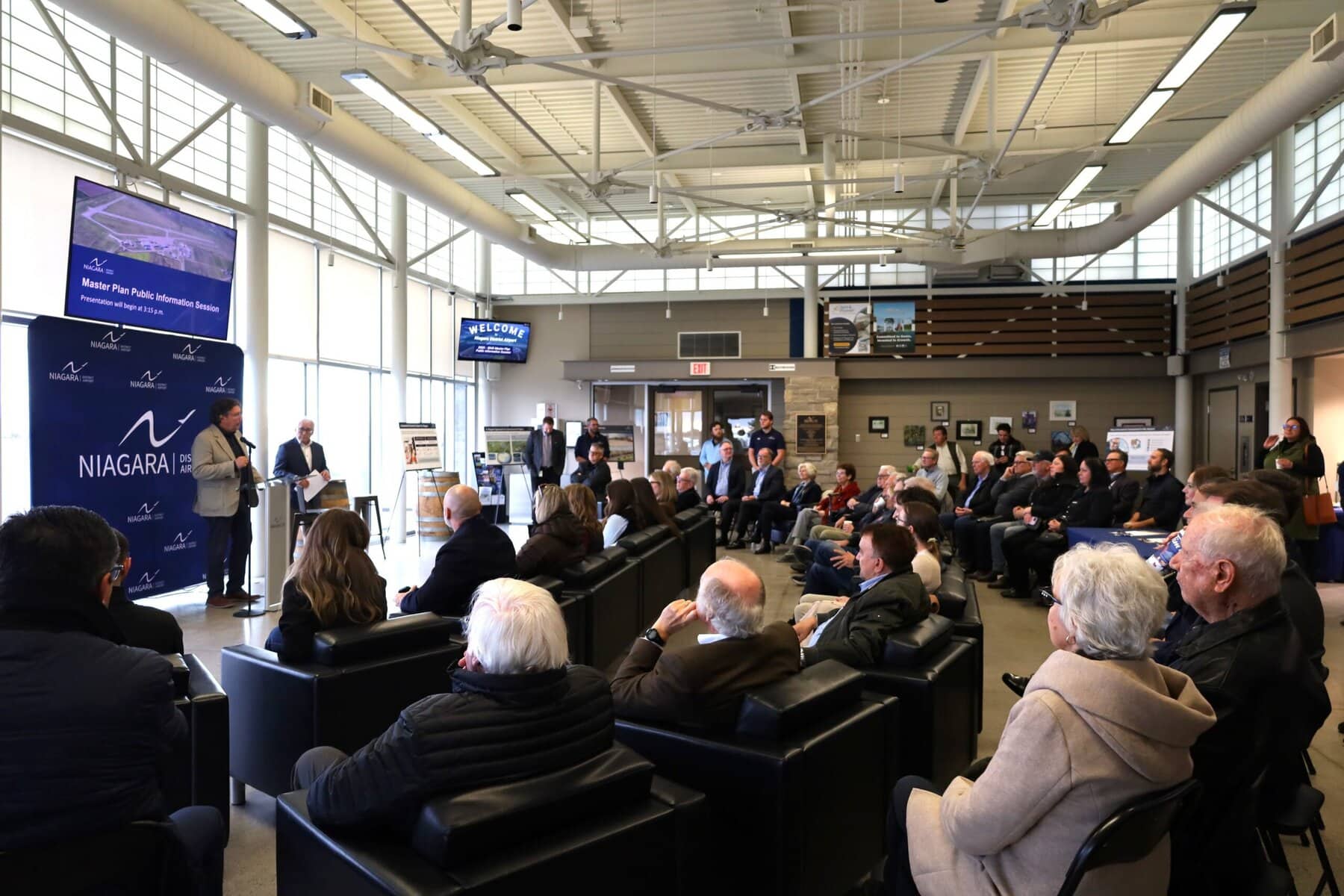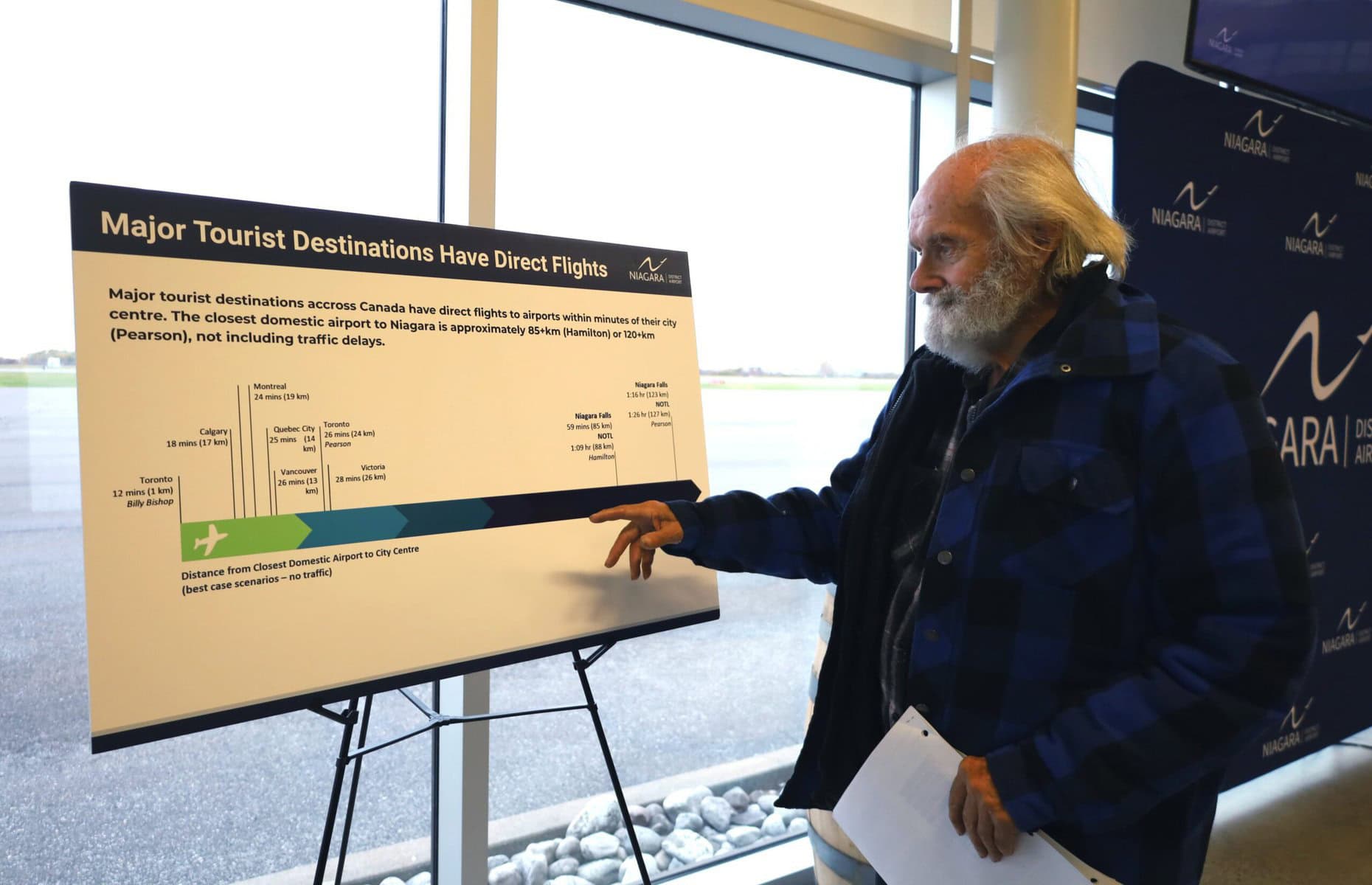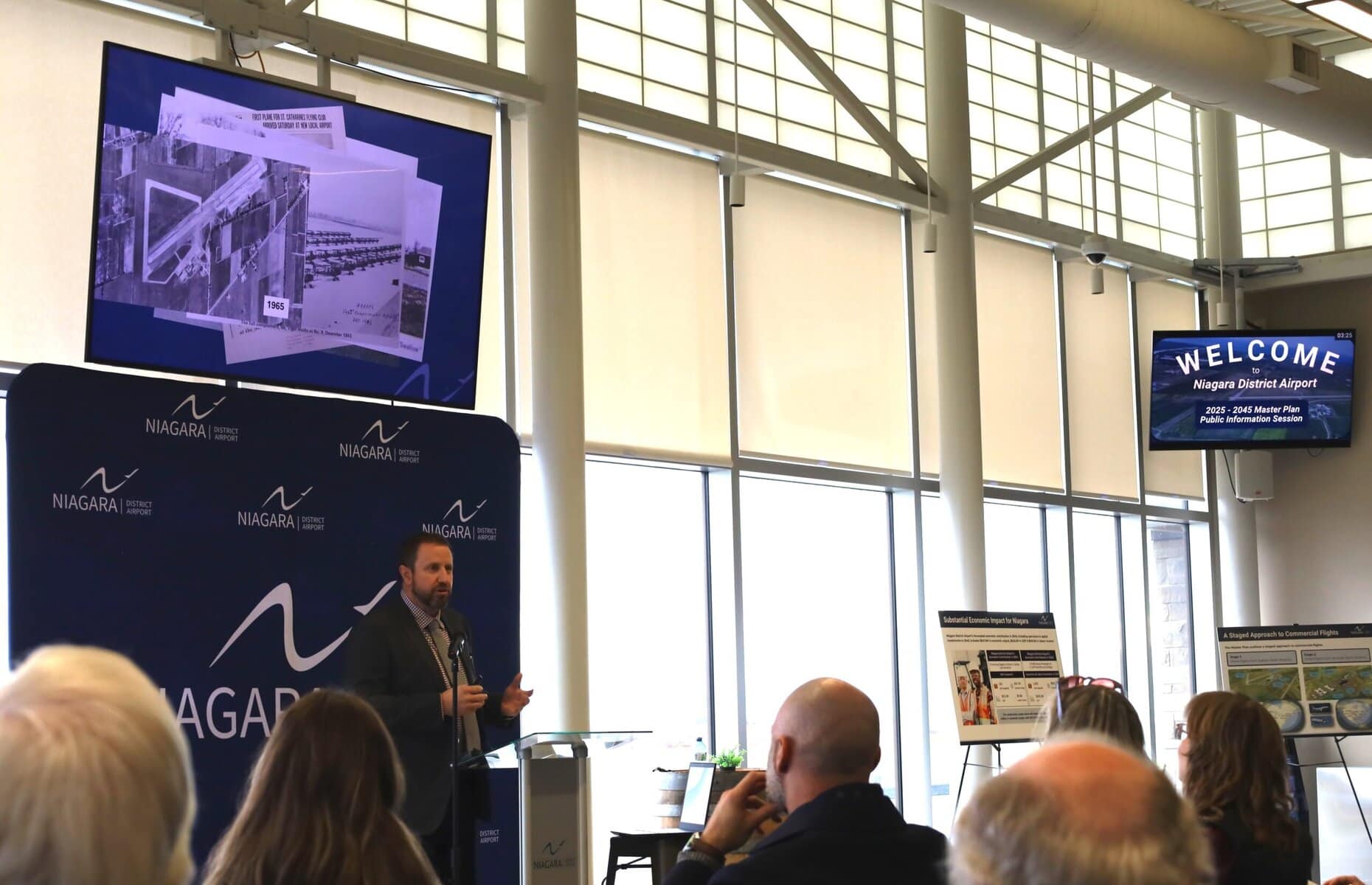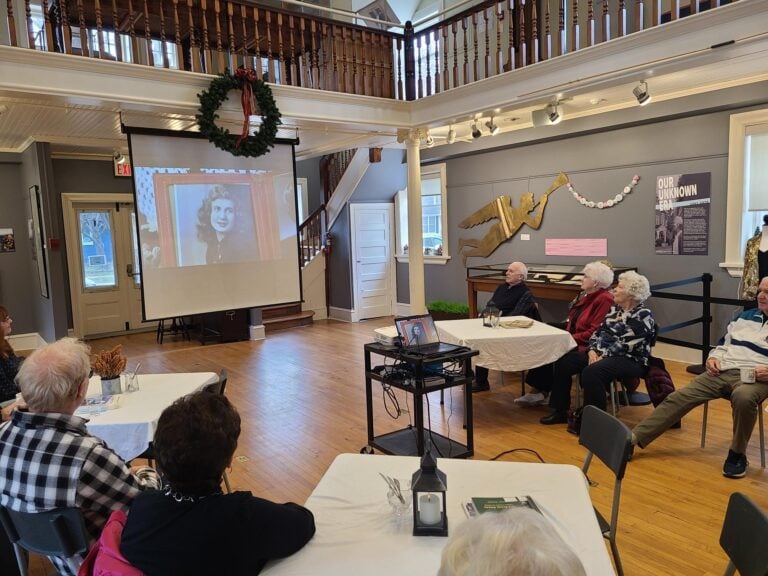Officials say Niagara-on-the-Lake residents, businesses and other stakeholders had one leading reaction as they poured into the Niagara District Airport on Thursday to learn about the new long-term master plan: “about time.”
Dozens came for the plan’s third open house, which offered a detailed first look and an opportunity to speak with staff and officials about what comes next.
“It’s a conversation that continues today — it’s not the end,” said Dan Pilon, the airport’s chief executive officer, in an interview.
He said the most common reaction he hears is “‘I can’t believe we haven’t talked about this before.’”
“Which is exciting,” he added.
After Pilon’s 20-minute presentation, the crowd moved through the terminal, studying display boards and speaking with airport staff, commission members, Canada Border Services Agency representatives and elected officials. People asked what could change at the airport — and how soon.
One of them was Bert Dandy, whose vested interest in airports comes from experience — he once managed an airport, opened a new one on Manitoulin Island in 1988 and has flown in air shows.
Born and raised in Toronto with relatives there, Dandy said the prospect of regular air service to Billy Bishop is what grabs his attention. For now, he depends on the GO train to dodge traffic — but if he could fly instead, he “would be a frequent flyer,” he said.
Lord Mayor Gary Zalepa, who delivered brief remarks at the session, called the plan “a generational opportunity for our municipalities together in the Niagara region.”
“There’s huge potential for unlocking significant economic expansion,” he said. “We have a good game plan here.”
He said the key now is pacing.
“We need to follow it and incrementally build upon it — in a strategic and smart, business-like fashion — so that we don’t, you know, move too fast ahead,” he said.
Zalepa said he hears “the odd question” about flight paths or noise, but concerns usually ease once residents understand the scale of aviation being considered.
“They’re thinking of similar to large-scale airports like GTA,” he said.
According to the plan, the airport eventually anticipates small aircraft and a light schedule of flights — not the level of activity seen at big-city airports.
For Zalepa, sessions like Thursday’s are essential.
“I think information helps people be more open to understanding,” he said, adding that the open houses give residents and businesses a clearer sense of “how they might be impacted, or how they could plug in and benefit.”
Pilon said the session’s turnout mirrors the broader “about time” feeling officials have been hearing — a sense that residents are ready to finally discuss the airport’s potential in a meaningful way.
Megan McRae, who handles communications for the airport, said online engagement has tracked the same trend: “Everything I’ve seen online is fairly positive, which is great,” she said.
She said many online comments echo the same “about-time” sentiment raised at the Nov. 13 session.
A copy of the full plan and its executive summary can be found online at niagaradistrictairport.ca, under “2025–2045 Master Plan.”











